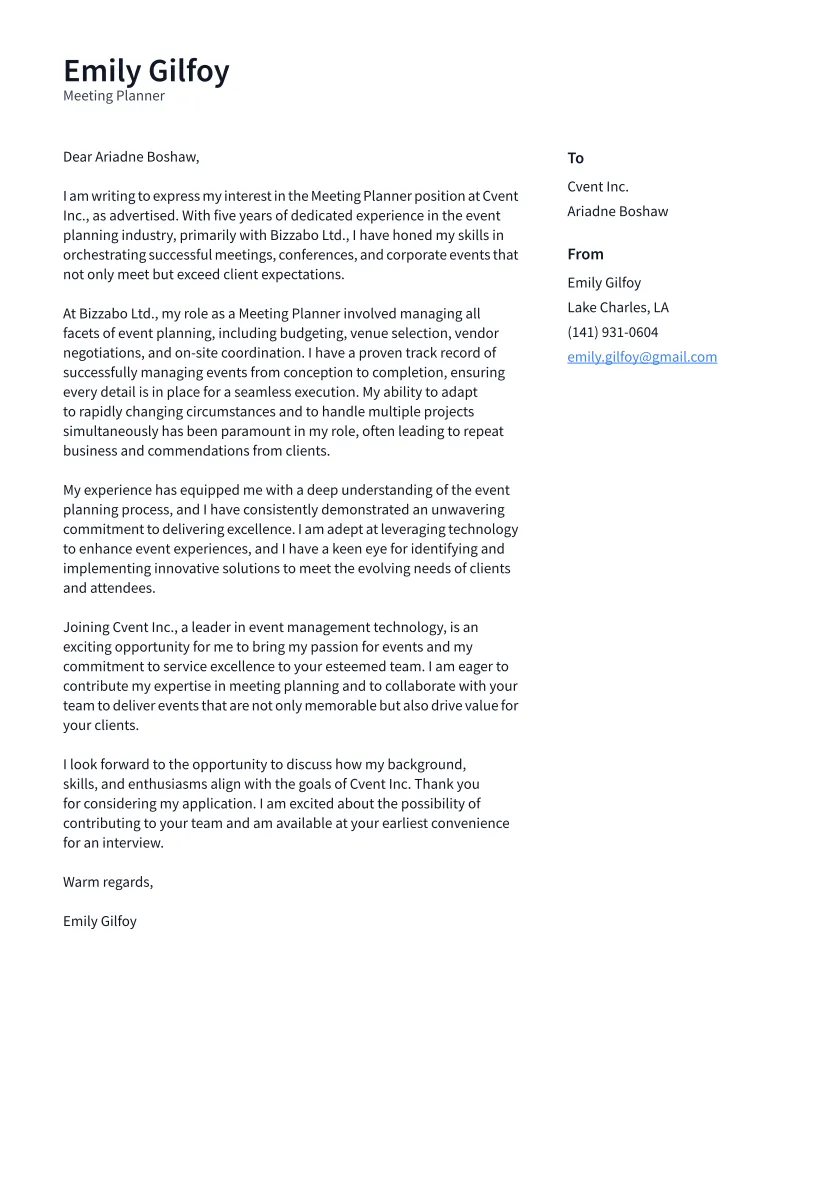Why You Need a Meeting Planner Cover Letter
In the competitive world of event planning, a well-crafted meeting planner cover letter is your first impression. It serves as a crucial tool to showcase your unique qualifications and make a compelling case for why you’re the ideal candidate. A cover letter isn’t just a formality; it’s an opportunity to highlight your passion, skills, and experience in a way that a resume alone cannot. It allows you to connect with the hiring manager on a personal level, demonstrating your understanding of the specific job requirements and your enthusiasm for the role. Without a strong cover letter, your application might get lost in the pile, so invest the time to create one that stands out and grabs attention. This is your chance to shine, so make sure it reflects your personality and your commitment to the position.
Key Components of a Meeting Planner Cover Letter
A successful meeting planner cover letter is built upon several essential components. These elements, when combined effectively, present a clear and persuasive argument for your candidacy. Each part plays a vital role in creating a cohesive and impactful message. From your contact information to the closing, every detail contributes to the overall strength of your application. Understanding each of these components will enable you to craft a cover letter that not only meets the standard requirements but also effectively conveys your unique value proposition to the potential employer, increasing your chances of securing an interview. Consider this a blueprint for success, helping you to present yourself in the best possible light.
Your Contact Information
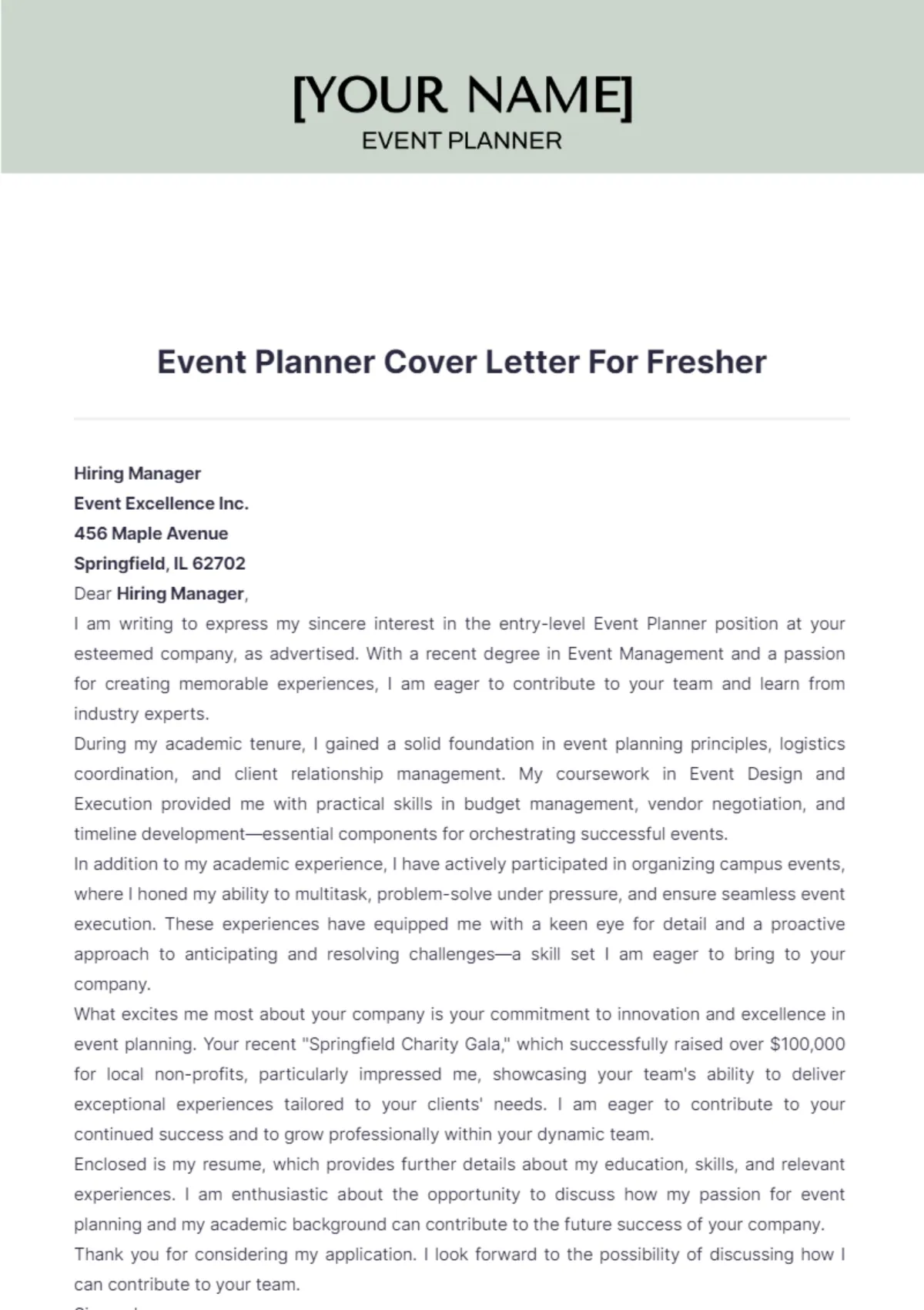
At the very top of your cover letter, you must include your full name, address, phone number, and professional email address. This information ensures that the hiring manager can easily reach you. Make sure your contact information is up-to-date and accurate. Double-check the spelling of your email address, as even a small typo can lead to missed opportunities. Consider using a professional-sounding email address. If you have a LinkedIn profile, you can include the link to it as well. Presenting clear and readily accessible contact details demonstrates professionalism and attention to detail, crucial qualities for any meeting planner.
The Date
Directly below your contact information, you should include the date the cover letter is written. This helps the employer understand when you applied for the position. Use a standard format for the date, such as Month Day, Year (e.g., October 26, 2024). Consistency is key, so ensure the date aligns with the format used throughout the document. The date is a simple detail but important for maintaining order and presenting your application in a polished manner. This small element contributes to the overall impression of professionalism.
Employer’s Contact Information
Following the date, include the employer’s contact information. This typically includes the name of the hiring manager (if known), their title, the company name, and the company’s address. Research who will receive your application and address the letter to that specific individual. If you can’t find the hiring manager’s name, use a general salutation like “Dear Hiring Manager.” Tailoring the letter to a specific person shows that you’ve taken the initiative to research the company and the role, making a better impression than a generic approach. Always double-check the accuracy of the information before submitting the application to avoid any errors.
The Salutation
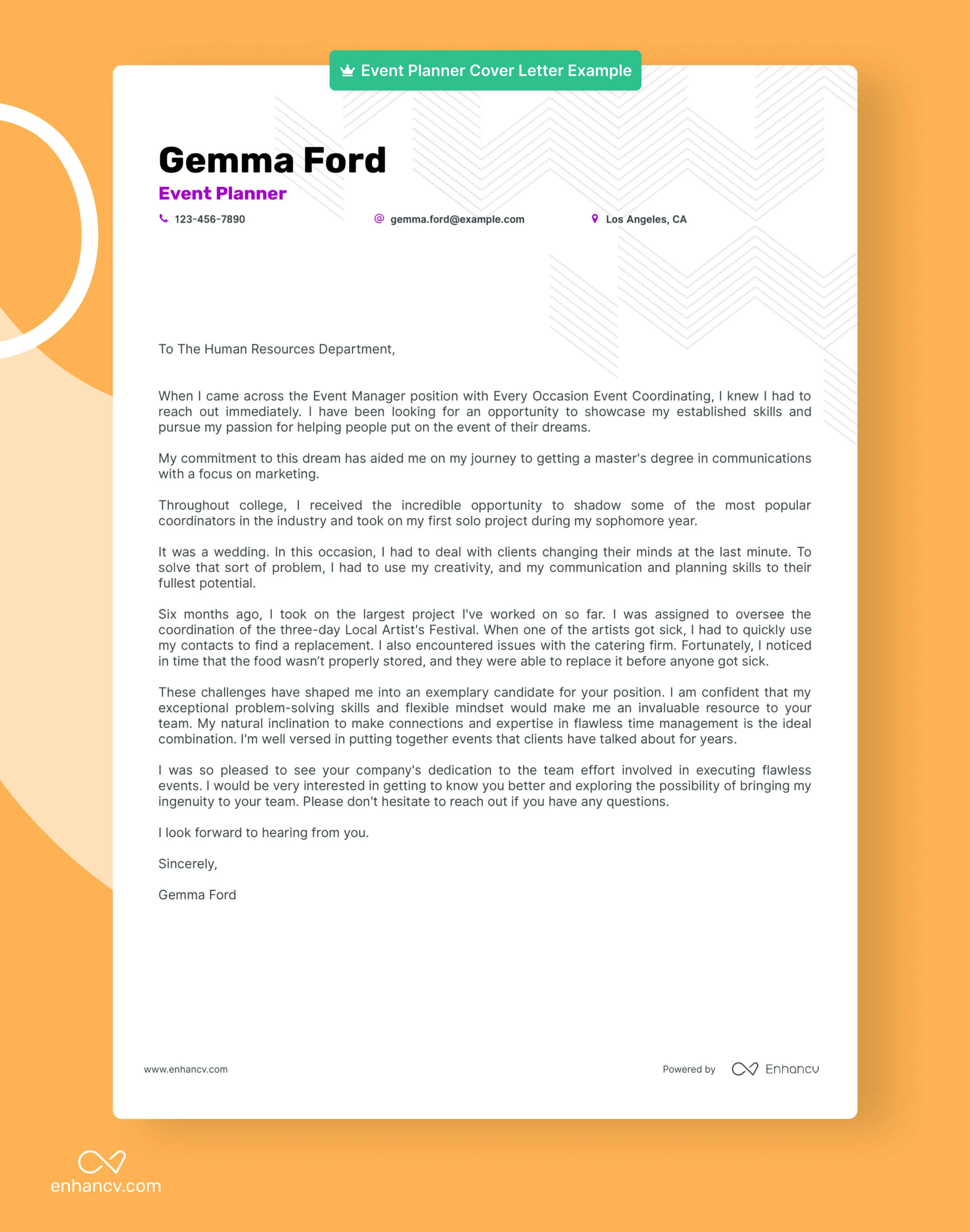
Start your letter with a professional salutation. If you know the hiring manager’s name, use “Dear Mr./Ms./Mx. [Last Name].” If the name is unknown, use “Dear Hiring Manager.” Avoid generic greetings. The salutation sets the tone for the rest of the letter, so make it respectful and appropriate. This initial greeting establishes a sense of formality and respect, making a good first impression from the very beginning. This is one of the basic yet essential steps in setting up your professional cover letter and showing you pay attention to detail.
Highlighting Your Skills and Experience
This is where you get to showcase your qualifications. In the body of your cover letter, highlight your relevant skills and experience. Explain how your background aligns with the job requirements. Provide specific examples to demonstrate your capabilities. Use the job description to identify the key skills and qualifications the employer seeks. Make sure to address each one in your letter. This section allows you to connect the dots between your experience and the job’s needs. Use clear and concise language and focus on what you can bring to the role. The goal is to paint a vivid picture of your strengths and how they align with the position.
Quantifiable Achievements
Instead of just listing your responsibilities, quantify your achievements. Provide measurable results to demonstrate your impact. For example, mention how you increased event attendance, reduced costs, or improved attendee satisfaction. Using numbers and statistics adds credibility to your claims. This also showcases your ability to achieve results and make a tangible contribution to the company. Whenever possible, include specific examples to give the hiring manager a clear picture of your value. Using numbers is a highly effective way to stand out.
Tailoring Your Letter to the Job
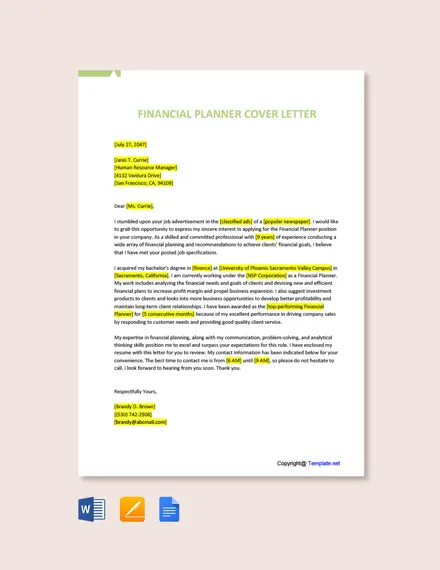
Customize each cover letter to the specific job you are applying for. Avoid using a generic template that doesn’t address the unique requirements of the role. Carefully review the job description and tailor your skills and experiences to match the employer’s needs. Explain why you’re a good fit for this particular role and company. Show that you’ve researched the company and understand their goals. This level of personalization demonstrates your genuine interest in the position and significantly increases your chances of getting an interview. Tailoring makes your letter relevant and engaging.
Addressing Specific Requirements
Identify and address the key requirements listed in the job description. If the job requires experience with a specific event planning software or skill, mention your proficiency with it. If they mention specific industry certifications, be sure to include them. The best cover letters directly address the employer’s stated needs. This ensures your letter aligns with what the employer is looking for. This proactive approach indicates you pay close attention to detail and can effectively fulfill the demands of the job. When you demonstrate that you have the skills and qualifications the employer is looking for, you are much more likely to make a favorable impression.
Expressing Your Enthusiasm
Express your enthusiasm for the position and the company. Explain what excites you about the opportunity and why you want to work there. Share your passion for event planning. Show the hiring manager that you’re not just looking for a job, but a fulfilling career. A genuine expression of your enthusiasm can make you stand out among other applicants. Your passion is contagious and often makes a lasting impression. Let your excitement for event planning shine through in your cover letter. Show that you’re eager to contribute your talents and grow with the company.
Closing the Letter
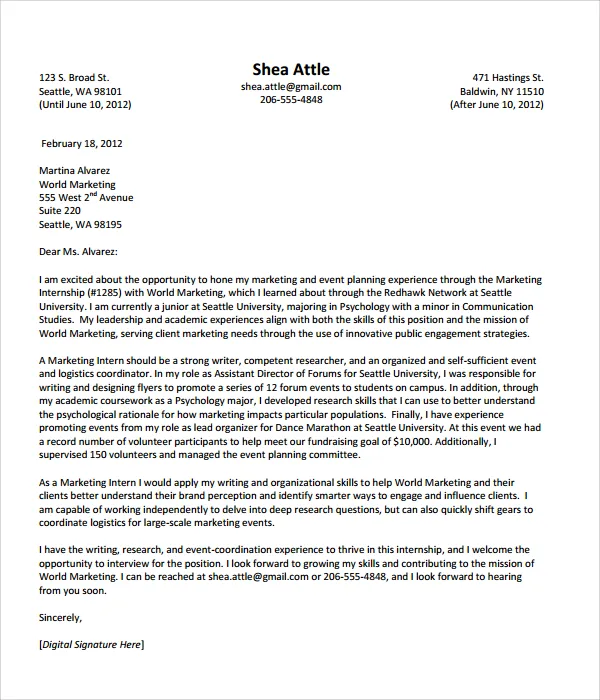
Conclude your cover letter with a strong call to action. Reiterate your interest in the position and express your eagerness to discuss your qualifications further. Thank the hiring manager for their time and consideration. Include a polite closing, such as “Sincerely,” or “Best regards,” followed by your full name. A concise and professional closing leaves a positive and lasting impression, encouraging the employer to contact you. Make it clear you are available for an interview. Your goal should be to leave the reader with a clear understanding of your interest and the next steps.
Formatting and Proofreading
Pay close attention to the formatting and proofreading of your cover letter. A well-formatted, error-free letter demonstrates professionalism and attention to detail. Poor formatting and grammatical errors can reflect poorly on your overall presentation. Take the time to ensure your cover letter looks polished and professional, as these details can make a substantial difference in the impression you make on potential employers. A clean and error-free cover letter will increase the likelihood of securing an interview. Attention to detail is key.
Choosing the Right Font and Format
Choose a professional and easy-to-read font, such as Times New Roman, Arial, or Calibri. Use a standard font size (11 or 12 points). Use consistent formatting throughout the document. Use single spacing for the body of the letter and add a space between paragraphs. Ensure your margins are set to one inch on all sides. Use clear headings and bullet points to organize information and make it easier to read. Your goal is to create a clean and visually appealing document. Good formatting enhances readability and makes a positive impression on the hiring manager.
Proofreading for Errors
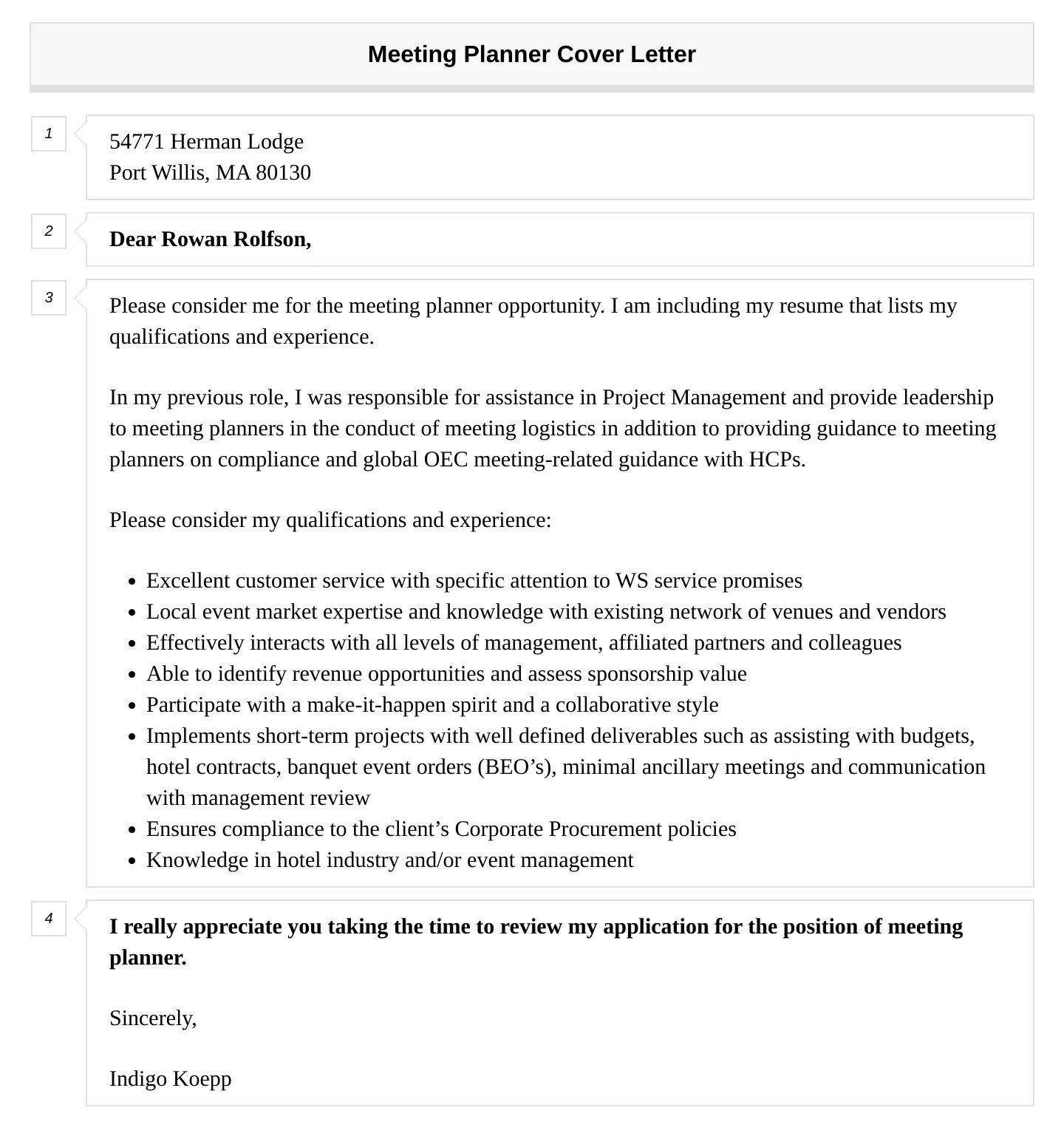
Carefully proofread your cover letter for any grammatical errors, spelling mistakes, or typos. Even the smallest mistake can undermine your credibility. Read the letter aloud, use a grammar checker, and have someone else review it. It helps to have another set of eyes to catch any errors you may have missed. Take your time, and carefully review your letter before submitting it. Errors can make your application less appealing. The goal is to ensure your writing is professional and polished. Proofreading is a critical step.
